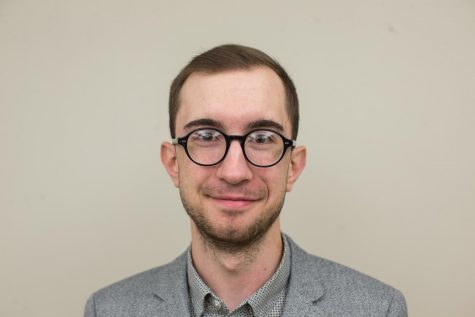UI provost looks to boost underrepresented faculty support through new initiatives
During the UI’s annual Diversity, Equity, and Inclusion update, Provost Montserrat Fuentes highlighted areas in which the university plans to address the hiring and retention of faculty members, especially faculty members from underrepresented communities.
Montse Fuentes, the Executive Vice President and provost, speaks at the Diversity Update on Wednesday, January 22, in the IMU Main Lounge. Fuentes is also a professor of Statistics, Actuarial Science and Biostatistics.
January 23, 2020
The University of Iowa is aiming to increase support for underrepresented faculty through a number of initiatives shared with the campus community Wednesday.
In the UI’s annual Diversity, Equity, and Inclusion update in the IMU Main Lounge on Wednesday, UI Provost Montserrat Fuentes highlighted areas in which the university plans to address the hiring and retention of faculty members. She said she hopes the programs will encourage more people of underrepresented communities to work and stay at the UI.
One concern Fuentes highlighted was a five-year decrease in tenure and tenure-track faculty – even though the total faculty headcount rose, the share of tenure and tenure-track faculty has declined.
From fiscal 2015 to fiscal 2019, the total number of tenure track-faculty fell from 1,616 to 1,496. The percentage of underrepresented minority faculty among all tenure-track faculty members saw a small increase from 7.1 percent to 7.5 percent.
“The number of tenure-track faculty has been decreasing,” Fuentes said in a Tuesday interview with The Daily Iowan. “The number of underrepresented and minority faculty we want to increase is in the tenure track, so it has to be a priority to act on that increase of retention, increase the recruitment of tenure track, and to diversify the tenure track.”
How these focuses will come to fruition, she said, will manifest in a number of initiatives and programming geared toward existing and prospective tenure-track faculty.
One program, the Path to Distinction, will integrate research-informed best practices concerning diversity and equity into recruitment processes in different academic departments. Additionally, the Distinction Through Diversity Fund will recruit and retain undergraduate students and tenure-track faculty of color. These programs, she said, will begin to roll out as soon as this year.
“We are moving forward with more initiatives to recognize and highlight tenured faculty,” she said. “I would say that’s the group that we are at a higher risk of losing and not being able to replace effectively on campus.”
In March, Fuentes said the senior chief diversity officers from all Big Ten schools will travel to the UI to discuss further steps toward implementing Diversity, Equity, and Inclusion-related initiatives in and out of the classroom.
“I’m hoping they share with us their experiences so we are familiar with the infrastructure at these institutions. I do want to highlight what is happening at the University of Michigan — beyond the chief diversity officer, they have academic diversity officers within different academic units,” she said. “They also have a network to promote diversity … they have initiatives that I am excited to share with our campus community.”
This visit will happen shortly before the UI launches the search committee for the next associate vice president for Diversity, Equity, and Inclusion in April using search firm Isaacson, Miller. The UI will conduct feedback-heavy forums across campus regarding the selection.
Regardless of the challenges associated with implementing new programming, Fuentes said the UI is poised to implement the faculty-related aspects of its Diversity, Equity, and Inclusion Action Plan.
“We’re launching these programs to recognize the talent of our faculty and make sure they feel valued,” she said.















